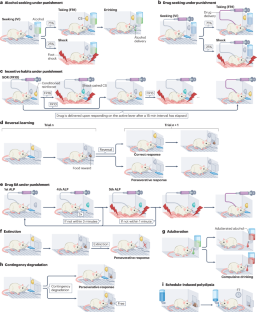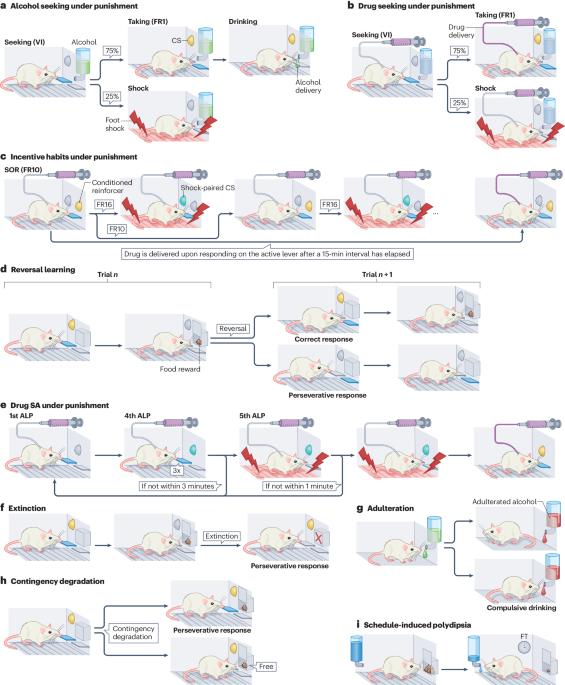从强迫到强迫:强迫症的神经基础
IF 28.7
1区 医学
Q1 NEUROSCIENCES
引用次数: 0
摘要
强迫行为是一种明显的非理性行为,通常是一种适应不良的行为,是包括强迫症和成瘾症在内的多种神经精神疾病的潜在转诊断症状,可能反映了一种被称为强迫性的维度特征的严重表现。在这篇综述中,我们利用人类神经影像学和动物模型的证据,研究了强迫症和强迫性的心理基础及其潜在的神经回路。我们确定了这一神经回路的几个主要元素,重点关注与目标导向行为和习惯有关的前额叶系统。这些系统包括眶额叶、前额叶、前扣带回和岛叶皮层及其与基底神经节、感觉运动皮层、顶叶皮层和小脑的连接。我们还考虑了其对未来冲动强迫症分类及其治疗的影响。本文章由计算机程序翻译,如有差异,请以英文原文为准。


From compulsivity to compulsion: the neural basis of compulsive disorders
Compulsive behaviour, an apparently irrational perseveration in often maladaptive acts, is a potential transdiagnostic symptom of several neuropsychiatric disorders, including obsessive-compulsive disorder and addiction, and may reflect the severe manifestation of a dimensional trait termed compulsivity. In this Review, we examine the psychological basis of compulsions and compulsivity and their underlying neural circuitry using evidence from human neuroimaging and animal models. Several main elements of this circuitry are identified, focused on fronto-striatal systems implicated in goal-directed behaviour and habits. These systems include the orbitofrontal, prefrontal, anterior cingulate and insular cortices and their connections with the basal ganglia as well as sensoriomotor and parietal cortices and cerebellum. We also consider the implications for future classification of impulsive–compulsive disorders and their treatment. Pathological compulsive behaviour is a potential transdiagnostic symptom of several neuropsychiatric disorders. In this Review, Robbins et al. examine the psychological basis of compulsions and compulsivity and their underlying neural circuitry, focused on fronto-striatal systems implicated in goal-directed behaviour and habits.
求助全文
通过发布文献求助,成功后即可免费获取论文全文。
去求助
来源期刊

Nature Reviews Neuroscience
NEUROSCIENCES-
自引率
0.60%
发文量
104
期刊介绍:
Nature Reviews Neuroscience is a multidisciplinary journal that covers various fields within neuroscience, aiming to offer a comprehensive understanding of the structure and function of the central nervous system. Advances in molecular, developmental, and cognitive neuroscience, facilitated by powerful experimental techniques and theoretical approaches, have made enduring neurobiological questions more accessible. Nature Reviews Neuroscience serves as a reliable and accessible resource, addressing the breadth and depth of modern neuroscience. It acts as an authoritative and engaging reference for scientists interested in all aspects of neuroscience.
 求助内容:
求助内容: 应助结果提醒方式:
应助结果提醒方式:


